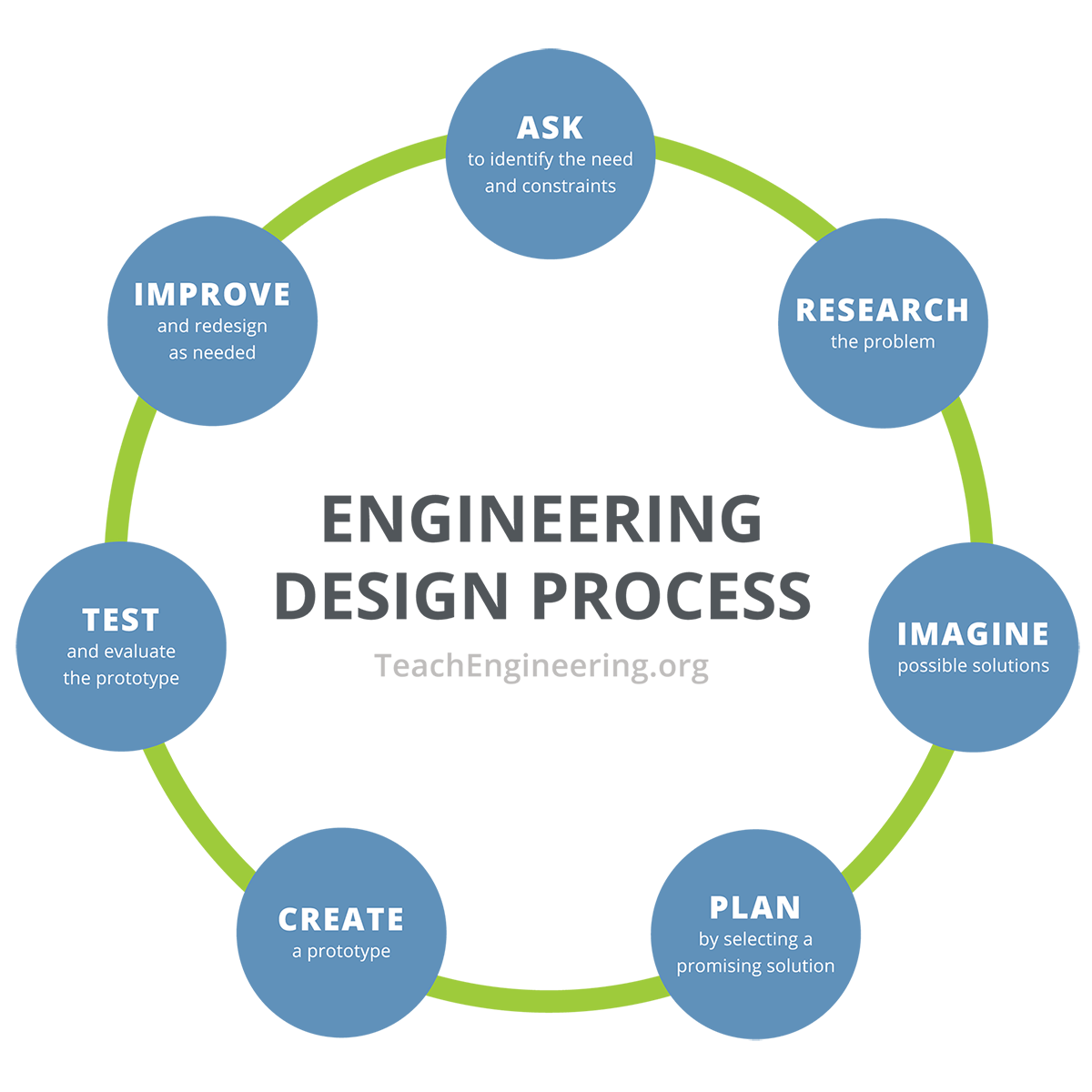For all forms of mechanical engineering, including my own, mechanical engineering, the most fundamental process is the engineering design process. This can be visualized in different ways, but most often it takes the form of either a circular path or a flowchart with branches and repeats.
Many different groups have tried to define the steps of the engineering design process and they don’t agree on how many steps there should be, what they are, or how they should be ordered. The process I like the most is the one pictured below.

It has seven steps arranged in a circular pathway. They instruct the user to first ask themselves what are the needs and constraints that the product must meet. Next, it directs the user to research the problem at hand. The following steps instruct the user to imagine possible solutions to their problem, formulate a plan by selecting the most promising of these solutions, and create a prototype of the solution. Then, the user is instructed to test this prototype against their initial needs and constraints and improve the design if needed before circling back around to the beginning.
This version is concise and descriptive without being too restricting to the user. The only improvement I would add to this process would be to add a step after “Test” that would instruct the user to evaluate the prototype with their team or supervisor before improving it. I also think the the field as a whole should standardize the design process across the board. It seems every design class and every company has their own version. The differences between versions aren’t too great that they would become a boundary to a new employee or student. However, I do think it would promote multi-disciplinary design teams and collaboration across cultures.
Eliza Narsavage
